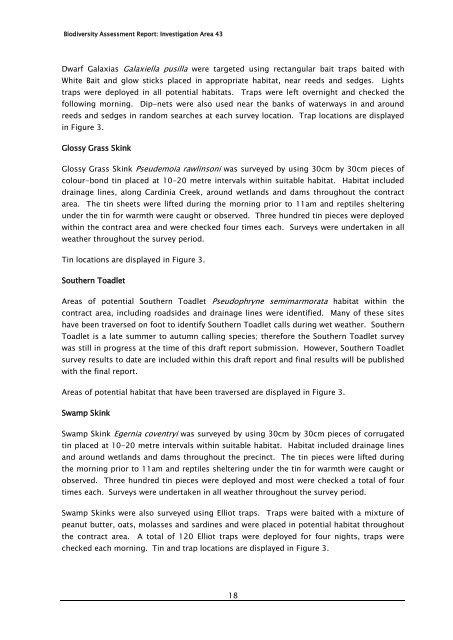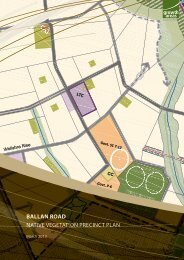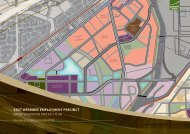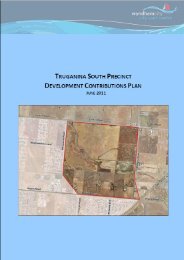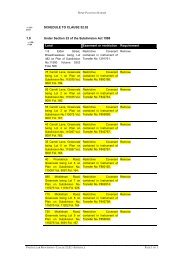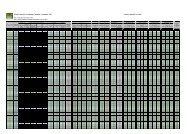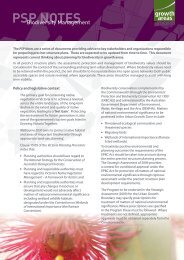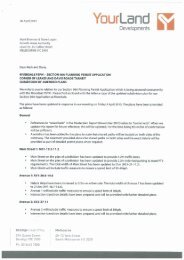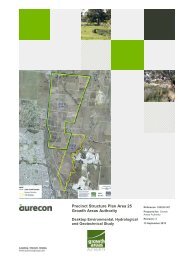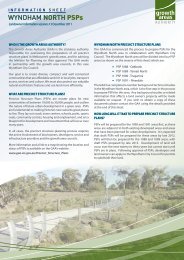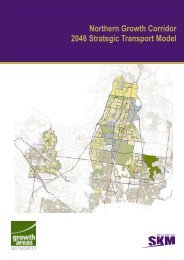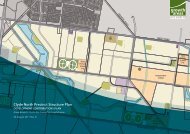Biodiversity Assessment Report Contract Area 43: Pound Road ...
Biodiversity Assessment Report Contract Area 43: Pound Road ...
Biodiversity Assessment Report Contract Area 43: Pound Road ...
Create successful ePaper yourself
Turn your PDF publications into a flip-book with our unique Google optimized e-Paper software.
<strong>Biodiversity</strong> <strong>Assessment</strong> <strong>Report</strong>: Investigation <strong>Area</strong> <strong>43</strong><br />
Dwarf Galaxias Galaxiella pusilla were targeted using rectangular bait traps baited with<br />
White Bait and glow sticks placed in appropriate habitat, near reeds and sedges. Lights<br />
traps were deployed in all potential habitats. Traps were left overnight and checked the<br />
following morning. Dip-nets were also used near the banks of waterways in and around<br />
reeds and sedges in random searches at each survey location. Trap locations are displayed<br />
in Figure 3.<br />
Glossy Grass Skink<br />
Glossy Grass Skink Pseudemoia rawlinsoni was surveyed by using 30cm by 30cm pieces of<br />
colour-bond tin placed at 10-20 metre intervals within suitable habitat. Habitat included<br />
drainage lines, along Cardinia Creek, around wetlands and dams throughout the contract<br />
area. The tin sheets were lifted during the morning prior to 11am and reptiles sheltering<br />
under the tin for warmth were caught or observed. Three hundred tin pieces were deployed<br />
within the contract area and were checked four times each. Surveys were undertaken in all<br />
weather throughout the survey period.<br />
Tin locations are displayed in Figure 3.<br />
Southern Toadlet<br />
<strong>Area</strong>s of potential Southern Toadlet Pseudophryne semimarmorata habitat within the<br />
contract area, including roadsides and drainage lines were identified. Many of these sites<br />
have been traversed on foot to identify Southern Toadlet calls during wet weather. Southern<br />
Toadlet is a late summer to autumn calling species; therefore the Southern Toadlet survey<br />
was still in progress at the time of this draft report submission. However, Southern Toadlet<br />
survey results to date are included within this draft report and final results will be published<br />
with the final report.<br />
<strong>Area</strong>s of potential habitat that have been traversed are displayed in Figure 3.<br />
Swamp Skink<br />
Swamp Skink Egernia coventryi was surveyed by using 30cm by 30cm pieces of corrugated<br />
tin placed at 10-20 metre intervals within suitable habitat. Habitat included drainage lines<br />
and around wetlands and dams throughout the precinct. The tin pieces were lifted during<br />
the morning prior to 11am and reptiles sheltering under the tin for warmth were caught or<br />
observed. Three hundred tin pieces were deployed and most were checked a total of four<br />
times each. Surveys were undertaken in all weather throughout the survey period.<br />
Swamp Skinks were also surveyed using Elliot traps. Traps were baited with a mixture of<br />
peanut butter, oats, molasses and sardines and were placed in potential habitat throughout<br />
the contract area. A total of 120 Elliot traps were deployed for four nights, traps were<br />
checked each morning. Tin and trap locations are displayed in Figure 3.<br />
18


